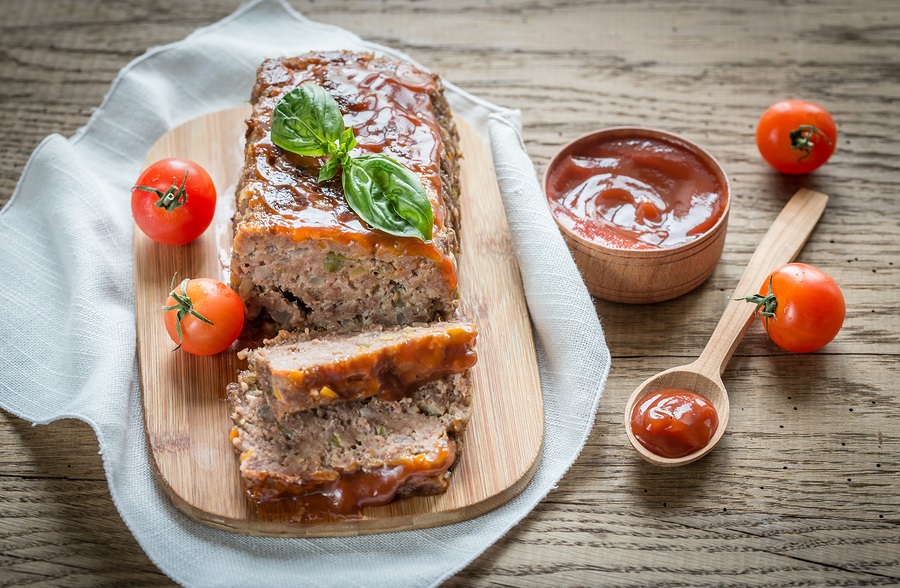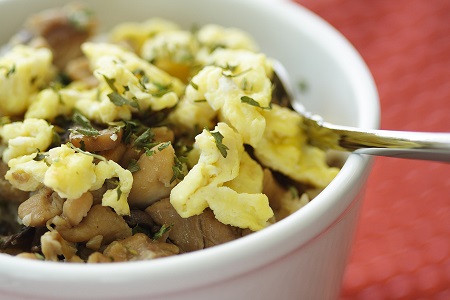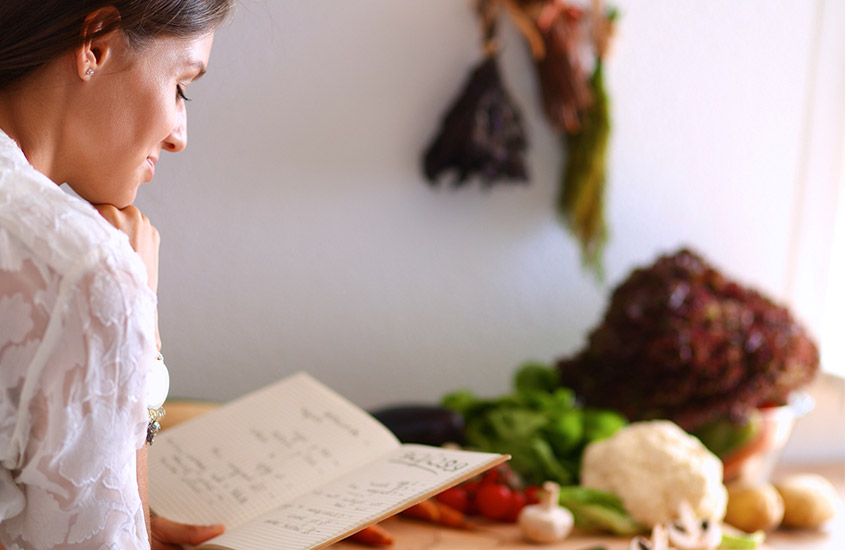No grains needed for this comfort food classic with a touch of class..
Click to get more Easy, Healthy Recipes
Preparation Time
20 minutesCooking Time
1-2 hoursDifficulty Rating
1Health Level
5Serves
8

Ingredients
- 1 lb / 454 g organic pastured beef or red game meat (e.g., venison), ground
- 1 egg, organic ‘wild-type’ or pastured
- ½ cup / 50 g raw organic almonds, ground to a mealy flour
- ¾ cup / 200 g organic no-sugar-added tomato paste or Paleo Pomodoro Paste*
- ¼ cup / 6 g fresh basil, finely chopped or 1 Tbsp / 2 g dried
- ¼ cup / 16 g fresh parsley, finely chopped or 1 Tbsp / 1½ g dried
- 2 Tbsp / 4 g fresh oregano, finely chopped or ½ Tbsp / 1½ g dried
- 1 clove garlic, minced or 1 tsp / 3 g dried
- ½ tsp / 1 g black pepper, ground
- 1 tsp / 5 ml extra-virgin olive oil
- 1¾ lbs / 800 g organic heirloom tomatoes
- 1 Tbsp / 14 ml extra-virgin olive oil
Directions
*If making tomato paste (Paleo Pomodoro Paste) from scratch, follow steps 1-5; otherwise start at step 6:- Preheat oven to 300°F / 150°C. Brush baking sheet with 1 tablespoon / 15 ml olive oil.
- Puree tomatoes in food processor or chopper with ‘S’ blade.
- Pour tomato puree into the prepared sheet, and place in the middle of preheated oven.
- Bake for 1 hour, turning drying mass every 10 minutes to ensure even cooking.
- Reduce heat to 200°F / 150°C, and bake for an additional 7-10 minutes, until thick and dark
- Place homemade or readymade tomato paste in large mixing bowl.
- Add remaining ingredients, and blend thoroughly.
- Increase oven setting to to 350°F / 175°C, and brush standard loaf baking dish with 1 teaspoon / 5 ml olive oil.
- Fill prepared dish with meat batter, patting down with spoon or spatula to ensure even top surface.
- Place pan in preheated oven, and bake for approximately one hour, until cooked through to desired doneness and meat thermometer registers 165°F / 75°C. (For a softer loaf with less top browning, cover with foil at the 30-minute point.)
Serving size: ⅛ recipe
Exchanges per Serving: 2 Protein, 1 Veg



Allergic to tree nuts can ground oatmeal be used?
Hi, mar54022. In the case of this recipe, yes. In general, oatmeal has considerably more carbohydrates and less fat than nuts, but the small amount here won’t make a significant nutritional difference.
Are your rating from 1 to 5 or 1 to 10 with the highest being best.
Hi, jmcanna. The scale is from 1 to 5, with 5 being the best.
Thank You
I live in Kenai, Alaska. I don’t know where to find Organic pastured beef, Organic Eggs, Organic almond flour or Heirloom tomatoes. The recipe looks totally Delicious!
Hi, cquale. Try these sites: https://www.kenailocalfood.org/ and http://www.eatwild.com/products/alaska.html, which includes a link to a business in Homer. This one in Kodiak offers shipping: http://www.alaskameat.com/order-online.php. It also covers options in Canada.
Can the ground almonds be substituted with almond flour? If so, is the equivalent the same?
Hi, soozanah. Almond flour IS made from finely ground almonds, so absolutely :).
Should have asked is there a daily allowance of food in this diet programme if so what is it
Hi, Bowlerman. Yes – that’s to what I referred in the “Exchange mode” comment. You will see the food group exchanges allotted to you each day. If it helps, you can refer to these lists for translation of exchanges: http://www.trimdownclub.com/exchanges-lists.
For all your recipes is there a limit to the quantity of ingredients you are allowed that is daily allowance
Hi, Bowlerman. You can see the exchanges allotted to you for each meal and day by clicking on “Exchange mode” in the toolbar above any of your menus.
Can you save recipes that you like somewhere?
Hi, Kriskers. The tech development team is currently working on something like that within the site itself. In the meantime, you can save recipe links in a designated folder in your browser favorites.
On my dinner menu it says have beef, potatoes, and a vegetable do I still do the potatoes and vegetable with the meatloaf?
Hi, Amanda. At your current menu level, if you have 1/3 of this recipe instead of 1/8, that will take care of your entire dinner.
Can you use potatoes mashed or salad for serving with this dish
Hi, Kathleen. Absolutely! Your menu can be a guide for the portion sizes of each.
I have just joined and I do not understand the exchange or 2 protein etc
Hi, 123Isa, and welcome. Exchanges are units of nutrients that are like building blocks to make up your menus. The following are the general nutritional values of each exchange:
1 carb = 15 grams of carbohydrates + up to 3 grams of protein
1 protein = 7 grams of protein + up to 5 grams of fat
1 fat = 5 grams of fat
1 fruit = 15 grams of carbohydrates
1 vegetable = 3-5 grams of carbohydrates + up to 2 grams of protein
1 sweet = 15 grams of carbohydrates + up to 5 grams of fat
1 free vegetable = up to 3 grams of carbohydrates
1 free spread = up to 5 grams of carbohydrates or protein, or up to 2 grams of fat
Can you use oats instead of almond powder?
Hi, bridgemaven1. Yes 🙂 Just note that you may need to add a little water.
I am new at this and I do not know how to incorporate these recipes into my dinner plan. Please help. Not sure if the meatloaf counts as one meat and I can add veggies or not. Confused, Janie
Hi, Janie. You can incorporate them by matching up the exchanges. You can see the exchanges allotted to each meal in your menu pattern by clicking on “Exchange view” in the toolbar above your finished menu, then slipping in however many portions of the recipe will fit; fractions of recipes are fine, too – for example, you can have 1-1/2 or 2 portions of this recipe in a meal.
I’m a new member as of today 1/30/2016 and this sounds wonderful. I do have a question, if you don’t mind answering it for me. I never did get to hear what all of the 5 foods that you should not eat are. I only could only hear 3 of them Margarine, Concentrated Juices, Whole Wheat Bread. The sound kept cutting out and then just stopped. I can’t wait to get started, thank you.
Hi, kimrabrand, and welcome! Here’s everything:
The video discussed artificial or overprocessed versions of popular foods that should be healthy, but have been manipulated into being particularly harmful to your goals. Rather than giving up on them altogether, we encourage better versions in their original, natural forms. Note that the foods discussed in the video are only examples, and many other popular foods have been similarly affected—so it’s good to read labels, be aware of how a food is made, and choose whole foods as much as possible.
1. Regular “whole wheat” bread – this often also contains refined flours, so it is preferred to select “100% whole” grain products (wheat or other). Even with these products, be sure to read the label and avoid hydrogenated fats or similar ingredients such as mono- and diglycerides.
2. Regular margarine – this is often made from chemically altered fats that create health risks similar to those people are trying to avoid by eating a plant-based product. If you must use a hardened oil, t is better to choose those based on coconut oil, and otherwise to use healthy liquid oils, such as olive, as much as possible.
3. Artificial sweeteners – you can read more about this here: http://www.trimdownclub.com/the-best-way-to-sweeten-your-tea-2.
4. Regular orange juice – If it is in a store, it is likely to have been stripped of what makes it healthy. Even if vitamins etc. have been added back in, it really is not the same. Fresh-squeezed is the way to go.
5. Conventional and overly processed soy – organic is fine, and minimally processed items such as tofu, yogurt, and milk, as well as fermented items such as tempeh and natto are fine. However, most pre-packaged mock meats tend to be a problem.
what do you do with the almonds whole or ground
Hi, jhaveman. The almonds are to be ground (or purchased pre-ground) and added to the mix in step 7.
New Member…but the recipes sound wonderful…can’nt wait to try the meatloaf
Do you add the almonds whole without grinding them or anything?
id also like to know how to prepare the almonds
Hi, pflaherty. The almonds are to be ground (or purchased pre-ground).
Love cooking and this menu sounds just up my street, especially as I grow my own herbs. Hopefully will add garlic to my veg patch this year. Now that’s what I call organic!!
I can’t wait to try this meatloaf